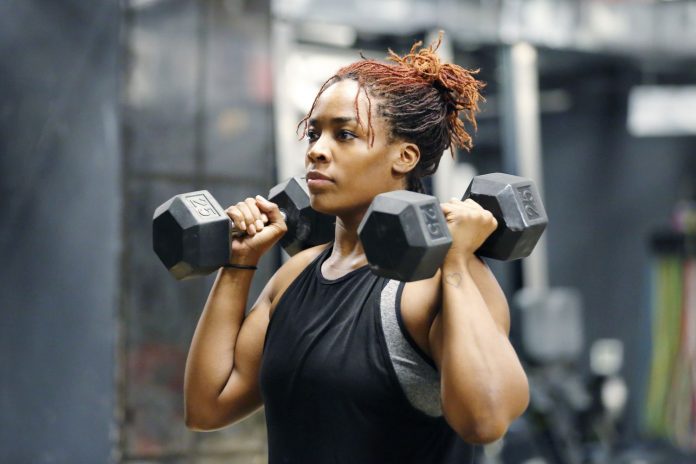When you’re looking to burn calories or lose weight, trainers often recommend resistance training—also called strength training or weight lifting—rather than aerobic or cardio exercise. Part of the reason is that this approach kicks off metabolic adaptations that continue even after you complete your workout.
In fact, research published in The FASEB Journal explains that loading muscles causes cellular changes that prompt changes in fat burning.
“To our knowledge, this is the first demonstration of how weight training initiates metabolic adaptations in fat tissue,” says study co-author John McCarthy, PhD, associate professor of physiology at the University of Kentucky College of Medicine.
What the Research Says
Examining studies done in both mice and humans, researchers found that this type of training causes significant changes in the way fat cells operate. In a process called mechanical loading, muscles get stressed through lifting, pushing, or pulling.
In response to this loading, cells in the affected muscles release a substance that sends instructions to fat cells, prompting them to start the fat-burning process, says Dr. McCarthy. Those changes don’t affect only the muscles being loaded. This response can kick off a fat-burning effect throughout the body, he says.
How Resistance Training Impacts You
Previous research on resistance training tended to focus on improvements in muscle function, says Dr. McCarthy, and studies on broader exercise benefits usually rely on endurance options such as running or cycling. What this new study offers is insight into how strength training provides advantages even on non-muscle tissue, he says.
Aerobic exercise has been shown to stimulate fat-burning to some degree, but resistance training seems to be particularly powerful in creating cellular-level adaptations that can streamline this process.
“We think this adds a new dimension to the understanding of how skeletal muscle communicates with other tissues,” says Dr. McCarthy. “Based on these findings, it’s reasonable to speculate that different forms of exercise will produce different effects on your cells.”
More Benefits
Fat-burning effects and greater strength aren’t the only advantages of resistance training. For example, a research review in Sports Medicine found that this type of training significantly lowers the risk of developing type 2 diabetes because it provides improvements in blood sugar regulation and blood lipids.
Plus, it doesn’t take much training time to see benefits. Research from the journal Mayo Clinic Proceedings shows that having even a moderate amount of muscle strength can lower the risk of developing type 2 diabetes by 32%.
“The great thing about resistance training is that it helps build more muscle,” says Carol Mack, DPT, CSCS, at CLE Sports PT & Performance. “The liver and muscles store glycogen. And, the more that can be stored in those areas means less would be circulating in the blood, so blood sugar would be lower. The great thing about resistance training is that it helps build more muscle, which then can store more glycogen.”
Steady-state cardio, like cycling or biking, uses glycogen for fuel but doesn’t build muscle mass as effectively as resistance training, she adds.
Other benefits to resistance training include:
Increased walking speed
Enhanced brain function
Better ability to control bodily movements
Improved physical performance
Higher self-esteem
Decreased anxiety
This training could have an effect on chronic pain as well, particularly lower back pain since it can strengthen the muscles that support the spine.
Getting Started
If you’re just beginning with resistance training, it’s important to take a slow-and-steady approach to get muscles and joints used to the movement, says Chad Walding, DPT, doctor of physical therapy and functional movement coach.
“People may try to take on too much load when they’re just starting, which could lead to an injury in the joints or strain in the muscles,” he says. “Another misstep is to take on movements that are too difficult when there hasn’t been a solid foundation built for good movement patterns.”
He suggests starting with movement first and very light weights, to focus on form and consistency. From there, he advises adding about 2% effort during each subsequent workout, and choosing free weights rather than machines.
“Using weights or bands can improve movement quality because you tend to involve more of the body, and that leads to moving better when you’re not exercising,” he says.


























